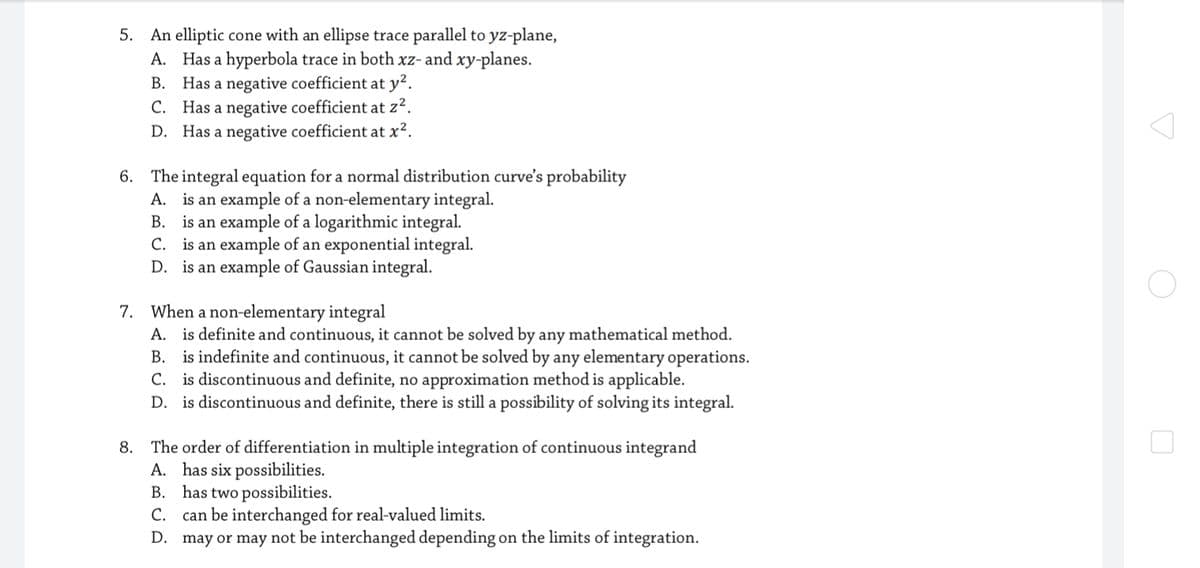5. An elliptic cone with an ellipse trace parallel to yz-plane, A. Has a hyperbola trace in both xz- and xy-planes. B. Has a negative coefficient at y?. C. Has a negative coefficient at z2. D. Has a negative coefficient at x2.
Permutations and Combinations
If there are 5 dishes, they can be relished in any order at a time. In permutation, it should be in a particular order. In combination, the order does not matter. Take 3 letters a, b, and c. The possible ways of pairing any two letters are ab, bc, ac, ba, cb and ca. It is in a particular order. So, this can be called the permutation of a, b, and c. But if the order does not matter then ab is the same as ba. Similarly, bc is the same as cb and ac is the same as ca. Here the list has ab, bc, and ac alone. This can be called the combination of a, b, and c.
Counting Theory
The fundamental counting principle is a rule that is used to count the total number of possible outcomes in a given situation.
Choose the correct answers(s). if none of the choices is correct, choose E.

Trending now
This is a popular solution!
Step by step
Solved in 2 steps


